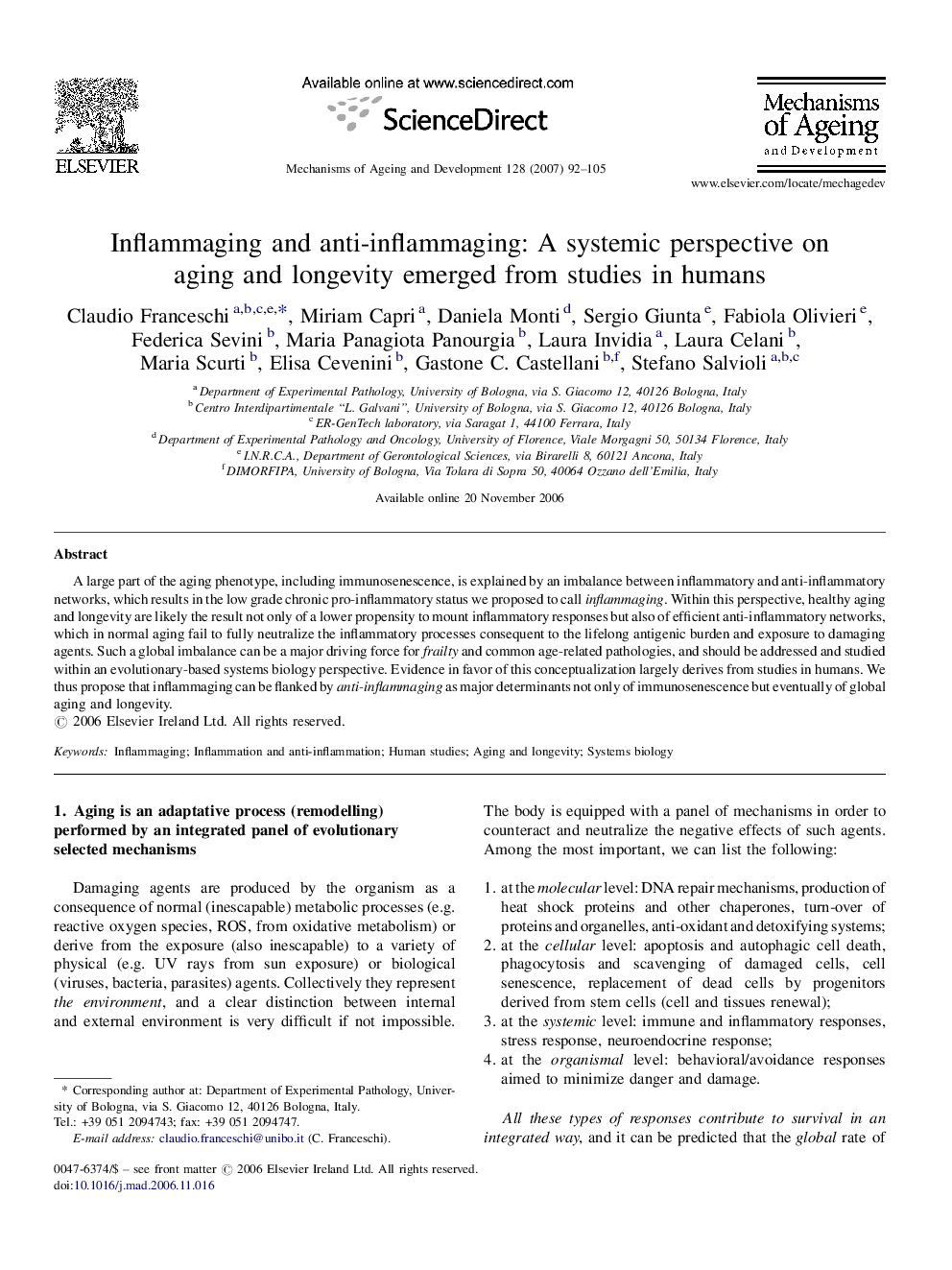| کد مقاله | کد نشریه | سال انتشار | مقاله انگلیسی | نسخه تمام متن |
|---|---|---|---|---|
| 1919913 | 1535678 | 2007 | 14 صفحه PDF | دانلود رایگان |

A large part of the aging phenotype, including immunosenescence, is explained by an imbalance between inflammatory and anti-inflammatory networks, which results in the low grade chronic pro-inflammatory status we proposed to call inflammaging. Within this perspective, healthy aging and longevity are likely the result not only of a lower propensity to mount inflammatory responses but also of efficient anti-inflammatory networks, which in normal aging fail to fully neutralize the inflammatory processes consequent to the lifelong antigenic burden and exposure to damaging agents. Such a global imbalance can be a major driving force for frailty and common age-related pathologies, and should be addressed and studied within an evolutionary-based systems biology perspective. Evidence in favor of this conceptualization largely derives from studies in humans. We thus propose that inflammaging can be flanked by anti-inflammaging as major determinants not only of immunosenescence but eventually of global aging and longevity.
Journal: Mechanisms of Ageing and Development - Volume 128, Issue 1, January 2007, Pages 92–105